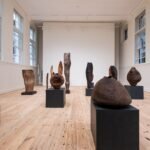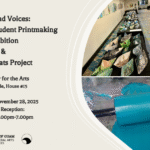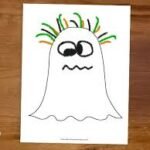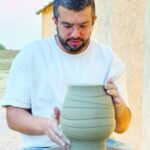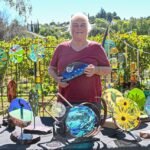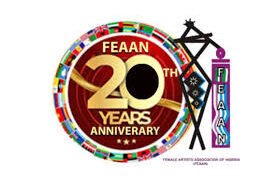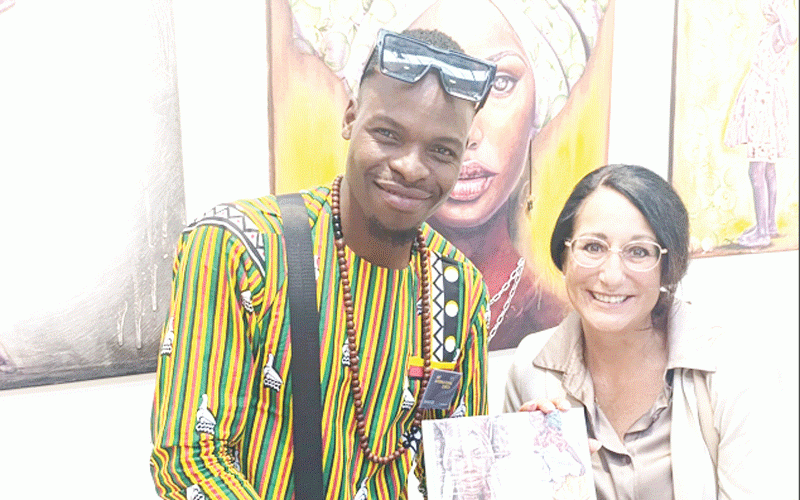

Dalí’s eccentric personality and flamboyant style made him a cultural icon, while his contributions to painting, film and sculpting helped to define the surrealist movement.
KEITH Zenda is a celebrated name in the Zimbabwean arts world, known for his vivid compositions, textured brushwork and cultural symbolism. Zenda is basking in the glow of an artistic milestone, which includes exhibiting his work alongside none other than surrealist legend Salvador Dalí. Dalí was a Spanish surrealist artist known for his dreamlike and bizarre imagery, marked by precise detail and a vivid imagination. Born in 1904 in Figueres, Spain, he gained international fame for works like The Persistence of Memory, featuring melting clocks in a desolate landscape. Dalí’s eccentric personality and flamboyant style made him a cultural icon, while his contributions to painting, film and sculpting helped to define the surrealist movement.
NewsDay Life & Style reporter Tendai Sauta (ND) sat down with Keith Zenda (KZ) to discuss this honour, his creative journey and global aspirations.
ND: Keith, congratulations on this incredible milestone. What was your reaction when you heard your work would be displayed alongside Salvador Dalí’s?
KZ: Salvador Dali has been my role model since I started creating art. I fell in love with his work through an Old Masters art book I discovered early in my journey. Now, to see my art displayed alongside his is an absolute dream come true! I’m beyond grateful and humbled.
ND: You’ve showcased your art in various local and international galleries. How does this particular exhibition compare to your past experiences?
KZ: This exhibition is more than any other exhibitions I’ve done before because this is a dream come true and something I never expected could happen to me. This exhibition is my ticket or a stamp to be proudly called an international artist.
ND: Dalí was a master of surrealism. How does your artistic voice align with or differ from his style and themes?
KZ: My work is a voice of Africa to tell the world about the beauty, culture and traditional beliefs of Africa. I represent Africa through my work and this exhibition is a cultural exchange among great artists from different continents.
ND: What themes do you explore most in your current body of work and how do they reflect on Zimbabwean identity or personal introspection?
KZ: I explore themes deeply rooted in African beliefs, particularly the significance of totems and ancestral spiritual awakening. I’m interested in how our traditional values and culture are being influenced by Western ideologies through social media. In Zimbabwean culture, totems play a significant role in identity, and traditional values emphasise respect and dignity. For instance, girls are taught the importance of self-preservation, while boys are encouraged to respect girls’ bodies and adhere to traditional practices like lobola, which honours the girl’s family ancestors. My mixed-media pieces reflect these themes, incorporating elements like chicken feathers, keys as earrings and chains as necklaces to symbolise empowerment and freedom. Through my art, I aim to reclaim and celebrate our cultural heritage.
ND: You’ve travelled and exhibited in places like South Africa, Tanzania, Zanzibar, South Korea, Dubai and Switzerland. How has the reception of your work varied across different countries and cultures?
KZ: My work has resonated with audiences across diverse cultures, evoking a profound emotional response. People are drawn to the spiritual essence and cultural narratives embedded in my pieces, often walking closer to examine the details. I’ve witnessed viewers moved to tears as they connect with the emotions and stories conveyed. The symbols and motifs in my work often spark meaningful conversations, with many recognising parallels between these elements and their cultural heritage. This cross-cultural connection highlights the universality of human experience and the power of art to transcend borders.
ND: Zimbabwe has a rich visual art tradition. Who are the local influences that shaped your journey and what advice can you give to emerging Zimbabwean artists?
KZ: I’m grateful for the talented visual artists in Zimbabwe who inspired me early in my career. Bethold Moyo, who mentored me in Gweru and Forbes Mushipe were instrumental in shaping my artistic journey. During visits to Harare, I was captivated by Misheck Masamvu’s creative process when I met him at Gallery Delta (now Nhaka Gallery). I also had the opportunity to meet Moffat Takadiwa, David Chinyama, Charles Bhebhe and many others. To the emerging Zimbabwean artists, I would like to say keep learning and visit established artists’ studios and ask questions, also don’t limit your imagination, pray, practice, patience and persistence — these 4Ps will take you places.
ND: Walk us through your creative process. Do you start with a concept, a feeling or a sketch? How do your pieces come to life?
KZ: My art started as a dream and now I’m just following the dream I had many years ago when I was a child. In my creative process, I start with a sketch and then painting stages, from dark painting to light painting and a painting can never get finished until it’s out of the studio.
ND: Are there any upcoming projects, exhibitions or collaborations you’re especially excited about?
KZ: At the moment, I’m establishing an Art Gallery and Studio in Domboshava, Harare and I believe it’ll be officially opened early next year as one of the co-founders of SwissZimHeritage, partnering my fellow artist friend Tonderai MujuArt and our business partner Dennis Ruf from Switzerland, we are bridging continents through art. I’m looking forward to our next exhibition in New York, Hampton, from July 10 to 13 and continuing to share African stories with the world. Under the patronage of Artgal. Online GmbH, Swiss-Zim Heritage proudly presents a bold and dynamic group of Zimbabwean painters whose visions are reshaping how the world sees African art: These artists do not merely paint — they reveal, remember and reimagine. Each brushstroke is rooted in tradition, yet pulses with the rhythm of a new generation. From ancestral whispers to urban vibrancy, they channel the spirit of Zimbabwe through vivid, fearless expression. From Zimbabwe to the Hamptons, NY.
ND: Finally, what does this moment, sharing exhibition space with one of history’s most iconic artists, mean for Keith Zenda the artist and Keith Zenda the Zimbabwean?
KZ: Being part of the exhibition in Zurich together with Salvador Dali and Frans van Straten (sculptor) and Bruno Bruni, a famous living Italian sculptor and painter, as well as other great artists, it’s a great milestone for me as an artist and my Zendaism brand.

